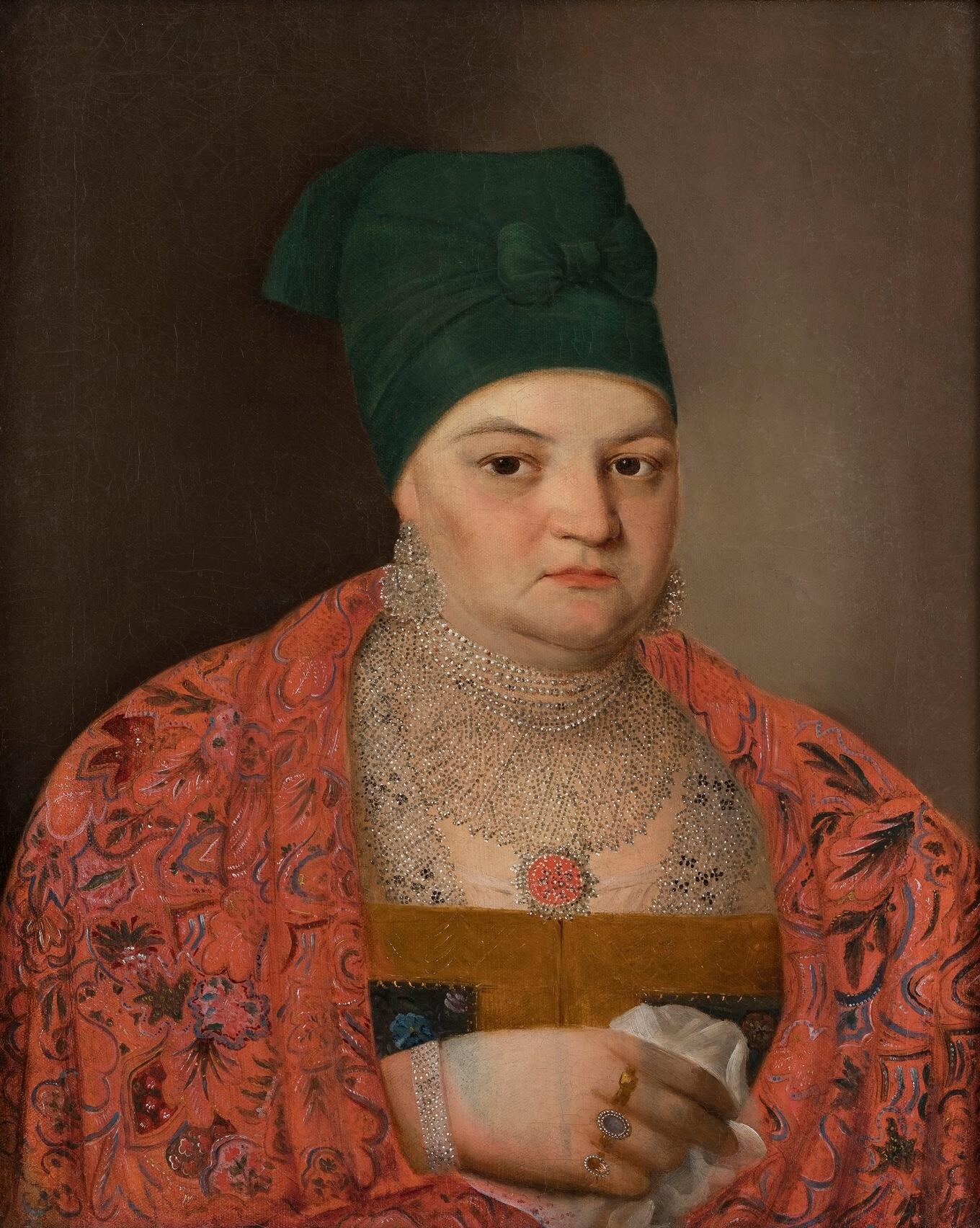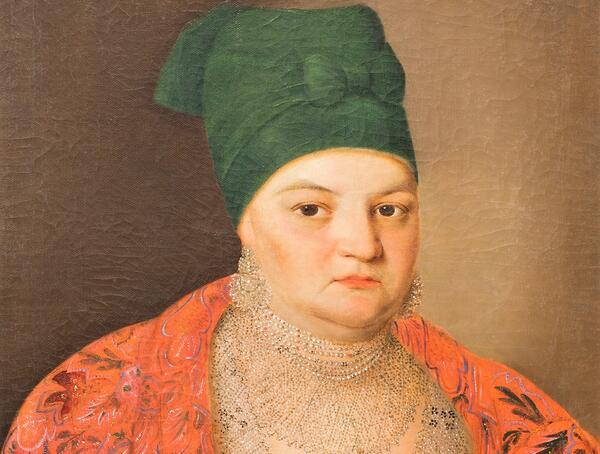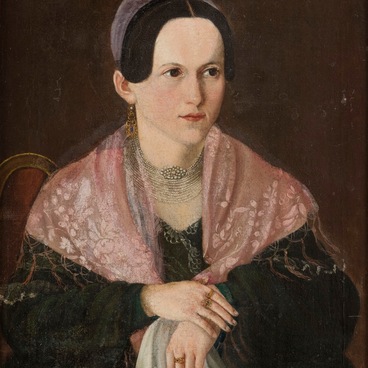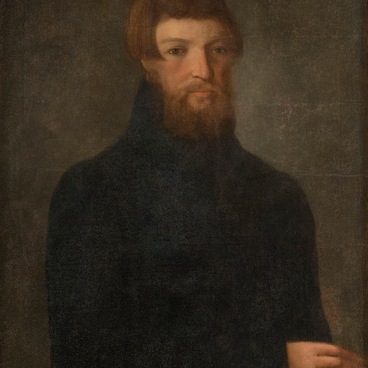The portrait shows a woman with an intense and powerful look — the Murom merchant’s wife Yevdokia Sorokina-Usova. She was born in a merchant family of the Usovs and was married to one of the merchants of the Sorokins. In the city archival documents, the Sorokins and the Usovs are listed as “merchants who traded vegetables, fruit, drinks and drysalters and owned linen factories”. The Usovs belonged to an “ancient Murom merchant class” and their ancestors were mentioned in the cadastres of the 17th — 18th centuries in the parishes of Vozdvizhensky and Nikola Mokry.
An unknown artist accurately portrayed a traditional costume of the merchant’s wife, usual for the Murom fashion in the 1810s — 1820s. Sorokina-Usova is dressed in dushegreika (a Russian festive outer garment) made of blue patterned fabric and edged with galloon — gold webbing. Accessories made of freshwater pearls complement the costume: several bead threads on the neck, necklaces on the chest, large earrings in the ears and a bracelet and rings on the hand.
The edge of the muslin shirt’s collar is attached to necklaces by a large agrafe — a brooch clasp. Sorokina-Usova’s shoulders are covered with a red “carpet” shawl. In her right hand, the merchant’s wife is holding a silk white handkerchief “shirinka” — a part of a festive dress. Murom chronicles, dated 1840, note that “a significant part of women in Murom, wishing to honor old costumes, sometimes wear a gold-colored sarafan (a long Russian summer dress), putting on short dushegreika of the same fabric over it. Their neck and chest are decorated with pearl necklaces and threads; they wear long pearl earrings.”
The green silk headscarf of the merchant’s wife is tied in front with a bow. It is a headdress which completely covers the woman’s hair. Such method of tying headscarf was common for the merchant class and is often found in the portraits of merchant’s wives of the last third of the 18th century and the first third of the 19th century in most regions of Russia. Murom merchant’s wives started to wear that in the second decade of the 19th century. Earlier, they wore kokoshnik (a traditional Russian headdress).
The woman’s head is turned to the left (to the right of the viewer). That means the portrait was paired with a male portrait. However, here the woman is depicted to the right of the man. That differs these works from European paired portraits of burghers — rich citizens — of the 16th century, as well as from most of the Russian paired merchant portraits. In such portraits, the man must take the place on the right.
An unknown artist accurately portrayed a traditional costume of the merchant’s wife, usual for the Murom fashion in the 1810s — 1820s. Sorokina-Usova is dressed in dushegreika (a Russian festive outer garment) made of blue patterned fabric and edged with galloon — gold webbing. Accessories made of freshwater pearls complement the costume: several bead threads on the neck, necklaces on the chest, large earrings in the ears and a bracelet and rings on the hand.
The edge of the muslin shirt’s collar is attached to necklaces by a large agrafe — a brooch clasp. Sorokina-Usova’s shoulders are covered with a red “carpet” shawl. In her right hand, the merchant’s wife is holding a silk white handkerchief “shirinka” — a part of a festive dress. Murom chronicles, dated 1840, note that “a significant part of women in Murom, wishing to honor old costumes, sometimes wear a gold-colored sarafan (a long Russian summer dress), putting on short dushegreika of the same fabric over it. Their neck and chest are decorated with pearl necklaces and threads; they wear long pearl earrings.”
The green silk headscarf of the merchant’s wife is tied in front with a bow. It is a headdress which completely covers the woman’s hair. Such method of tying headscarf was common for the merchant class and is often found in the portraits of merchant’s wives of the last third of the 18th century and the first third of the 19th century in most regions of Russia. Murom merchant’s wives started to wear that in the second decade of the 19th century. Earlier, they wore kokoshnik (a traditional Russian headdress).
The woman’s head is turned to the left (to the right of the viewer). That means the portrait was paired with a male portrait. However, here the woman is depicted to the right of the man. That differs these works from European paired portraits of burghers — rich citizens — of the 16th century, as well as from most of the Russian paired merchant portraits. In such portraits, the man must take the place on the right.



